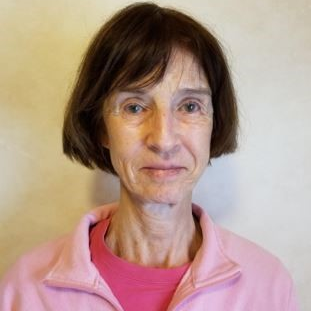Application of Artificial Intelligence in Land Use and Land Cover Mapping
A special issue of Remote Sensing (ISSN 2072-4292). This special issue belongs to the section "AI Remote Sensing".
Deadline for manuscript submissions: closed (1 June 2022) | Viewed by 40310
Special Issue Editors
2. Remote Sensing, GIS and Climatic Research Lab (RSGCRL), National Center of GIS and Space Applications, University of the Punjab, Lahore, Pakistan
Interests: remote sensing; artificial intelligence; cloud computing; big data; pattern recognition; sustainable development goals; landcover dynamics; urban ecology; tropical forest recovery; land degradation
Special Issues, Collections and Topics in MDPI journals
Interests: geo-informatics; environmental change; landscape change; urban climate; air pollution; climate change; tropical forest ecology; aerosols
Special Issues, Collections and Topics in MDPI journals
Interests: remote sensing; land degradation; croplands; droughts; environmental monitoring; machine learning
Special Issues, Collections and Topics in MDPI journals
Interests: land cover land use change; landscape restoration; biodiversity conservation
Special Issues, Collections and Topics in MDPI journals
Special Issue Information
Dear Colleagues,
Land cover monitoring provides critical insight to monitor and achieve Sustainable Development Goals (SDGs). During the last four decades, remote sensing has transformed from observation and monitoring to advanced understanding, for managing the planet’s resources. Land-use change data from satellite remote sensing, along with climate modelling and socio-economic indicators are playing vital roles in advancing interdisciplinary research.
The huge amount of data currently produced by modern Earth Observation (EO) satellite missions and Unmanned Aerial Vehicles (UAVs), availability of high-performance computing platforms and the development of artificial intelligence (AI) provide new opportunities to advance our knowledge about patterns of resource distribution and resource use. Machine learning approaches tailored for Earth Observation data can effectively support the challenges of spatial and temporal domain adaptation, hyperspectral data mining, integration of multi-source information and large-volume data analysis.
Considering these advances, this Special Issue invites manuscripts that present new developments and methodologies, best practices, and applications related to land use, land cover mapping and modelling through the implementation of artificial intelligence (fuzzy logic, neural networks, machine learning, deep learning, evolutionary computation, etc). We welcome submissions that provide the community with the most recent advancements on all aspects mentioned above. We welcome, Original Research Articles, Reviews, Letters, Technical Notes, as well as Highlight articles for a broader audience.
Dr. Sawaid Abbas
Prof. Janet E. Nichol
Dr. Faisal M. Qamer
Prof. Jianchu Xu
Guest Editors
Manuscript Submission Information
Manuscripts should be submitted online at www.mdpi.com by registering and logging in to this website. Once you are registered, click here to go to the submission form. Manuscripts can be submitted until the deadline. All submissions that pass pre-check are peer-reviewed. Accepted papers will be published continuously in the journal (as soon as accepted) and will be listed together on the special issue website. Research articles, review articles as well as short communications are invited. For planned papers, a title and short abstract (about 100 words) can be sent to the Editorial Office for announcement on this website.
Submitted manuscripts should not have been published previously, nor be under consideration for publication elsewhere (except conference proceedings papers). All manuscripts are thoroughly refereed through a single-blind peer-review process. A guide for authors and other relevant information for submission of manuscripts is available on the Instructions for Authors page. Remote Sensing is an international peer-reviewed open access semimonthly journal published by MDPI.
Please visit the Instructions for Authors page before submitting a manuscript. The Article Processing Charge (APC) for publication in this open access journal is 2700 CHF (Swiss Francs). Submitted papers should be well formatted and use good English. Authors may use MDPI's English editing service prior to publication or during author revisions.
Keywords
- Land Cover Land Use
- Monitoring Change
- Artificial Intelligence
- Machine Learning and Deep Learning
- Pattern Recognition and Data Mining
- Hyper Temporal Mapping
- High-Resolution Urban Landscape Mapping
- Hyperspectral Remote Sensing
- Biophysical and Social Data Integration
- Sustainable Development Goals (SDGs)







